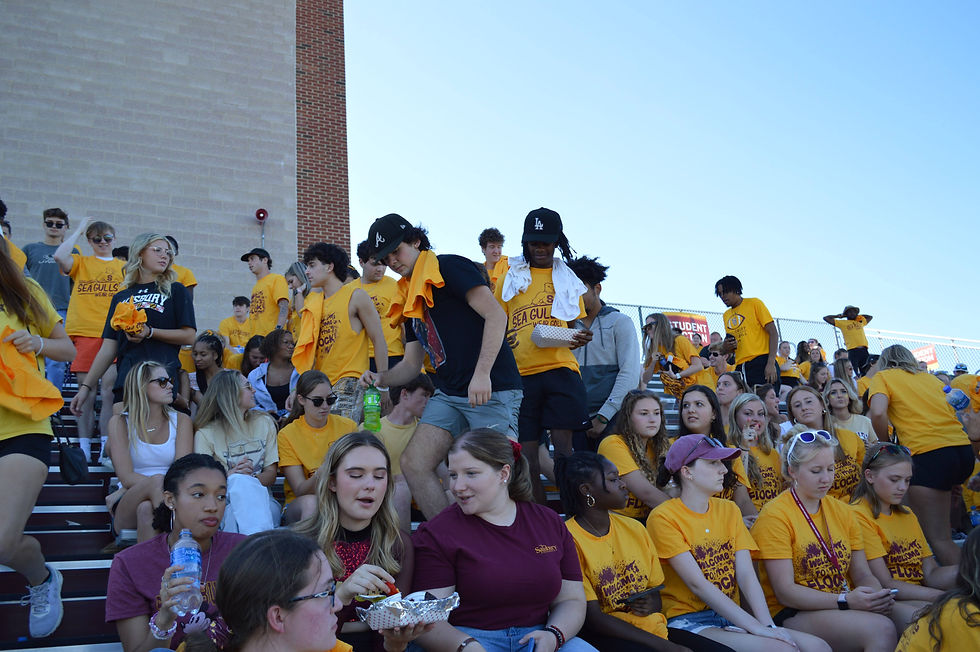NAACP welcomes diverse audiences to participate in conversation
- Apr 10, 2019
- 3 min read
Discrimination and prejudice are not only a problem among different races — they happen within the African American community every day — and they happen at Salisbury University.
Members of SU’s chapter of the National Association for the Advancement of Colored People greeted each other gleefully as the bass boomed from a speaker, but the topic of conversation made for a drastic contrast to the carefree mood.
Members of the association see discrimination among people of their own race due to various shades of melanin and the stereotypical views that accompany these different shades.
The predominantly African American club held a discussion in order to bring these conflicts to the surface of conversation and to shed light on an important issue within the community.
The song “Shades” by Wale gave way to rhythmic dancing as various conversations, intermingled with laughter and music, gave the lecture hall a lively change in scenery. The gathering could have passed for a party rather than a meeting.
As the crowd began to settle and people found their seats, a more serious tone emerged as SU junior and Public Relations Chair of the SU chapter of NAACP Chantess Robinson opened the conversation with the question “How would you define colorism?”
SU freshman Yayé Sy did not even have to think before sharing her definition, for the issue hit home for her.
“To me, colorism is defining beauty and standards by using different shades of skin tones to designate what is to be considered beautiful and what isn’t,” Sy said.
Within marginalized communities, there are still elements of prejudice and division among people of the same race, and in the number of shared definitions from audience members, it became clear that there was a division within the colored population.
Robinson said that the meeting was one event for NAACP’s “Astro Week,” which is modeled after "Astroworld" — an album by rapper Travis Scott. Each event was named after one of Scott’s songs.
Members of NAACP named the colorism conversation "Coffee Bean" because of their view that the title reflected the skin tones of African Americans and those people with melanin.
“We chose to talk about colorism just because it is a very controversial topic in our society and within our culture, so we thought it would be great to educate and expose people to that,” Robinson said.

The presentation included a number of examples of colorism throughout popular culture, whether it be in music videos, TV shows or movies.
Members of the organization were fueled with anger as they pitched in example after example of how Hollywood casts lighter skinned people for parts people initially scripted to be dark-skinned.
Most of the crowd — even in being a variety of different skin tones — could agree that colorism was a prevalent issue today, but the opinions in the room started to divide when the topic of "reverse colorism" came into play.
Sy explained that while there may be stereotypes associated with both light-skinned and dark-skinned people, she believes the comments against dark-skinned people go deeper with the confines of beauty standards and people making comments like, “Oh, you’re dark-skinned, so you can't be pretty or talented."
“I don’t think that reverse colorism exists, because it’s basically what we talked about when we first came — a black person can be prejudice to another race, but we are not able to be racist to another because we just don’t have that power,” Sy said.
Despite the differences in opinion, the conversation remained civil, each audience member allowing time for one another to voice their opinions, with Robinson mediating so that every person got a chance to speak their mind.
Robinson shared that in attending SU in 2016, her class was the largest class of incoming freshmen, and it was also the most diverse class in SU history.
When it comes to inclusion of diverse populations on campus, Robinson believes that through programs and support for marginalized and diverse communities, the level of inclusion is growing and getting better with time.
“It’s a program that takes a lot of implementation, and also those that welcome our feedback,” Robinson said. “I think SU has done a lot since [former SU President] Janet Dudley-Eshbach has been here, so I think it’s growing very much so on campus, but it still needs some tweaking just as every good thing does.”
By CAROLINE STREETT
Gull Life editor
Featured photo: Caroline Streett image.





Comments